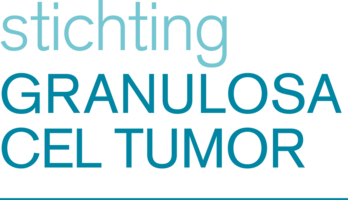radiation
purposeThe purpose of radiotherapy, or radiation, is to destroy tumor cells. It is a local treatment focussed on a certain tumor or a certain area in the body. It can be used for different purposes. For instance to try to eliminate one or several tumors completely. The tumor may eventually disappear completely; this is called curative or radical treatment. If the cancer has become incurable, radiotherapy is often used to relieve pain or other symptoms; this is called palliative treatment. a new option?In 1999 a retrospective review by MD Anderson from Houston - Texas was published, concerning adjuvant radiotherapy after debulking of patients with granulosa cell tumours. The patients were monitored from 1949 to 1988. The review shows that radiotherapy is not a miracle cure, but that this treatment does offer opportunities and should be considered as a treatment option. This begs the question as to why this treatment option for granulosa cell tumour has remained in the background for so long following the publication of this review, and why it was and still is barely discussed in consulting rooms. The more while in The Netherlands it is mentioned as option in the directive for non-epithelial ovarion cancers. new opportunityRadiation techniques have evolved enormously over the past decades. Imaging has become increasingly important in planning, administering and monitoring the treatment. The precision of radiation has also increased dramatically, allowing the number of radiation fractions and side effects to be reduced, which is good for patients. During treatment, imaging can be used to better direct the X-rays. This is called "image-guided radiation. In this way the irradiated area can be kept as small as possible and the shape and intensity of the radiation can be controlled. This is called intensity-modulated radiation. This reduces the radiation load on healthy tissues. There are different kinds of radiation and radiation plans. What is good for one is not always good for other patients. If you would like to know more about these kinds of radiation, take a look at this video. Through the private Facebook site GCT Survivor Sisters, we are aware of around 100 women in the world who have received radiotherapy for granulosa cell tumour recurrence. They have been irradiated on various devices that deliver pinpoint irradiation such as Cyberknife, SBRT, IMRT and VMAT. The treatment is not a cure, but it has had good to very good results for almost all women who received it. It is perceived by them as much less invasive than surgery or chemo and, for most, extends the time between recurrences. As a result, these women experience a much better quality of life. |  |
We thank Dr. Max Dahele, MBChB, MSc, PhD, MRCP, FRCR , for his input on the topic of radiation.
